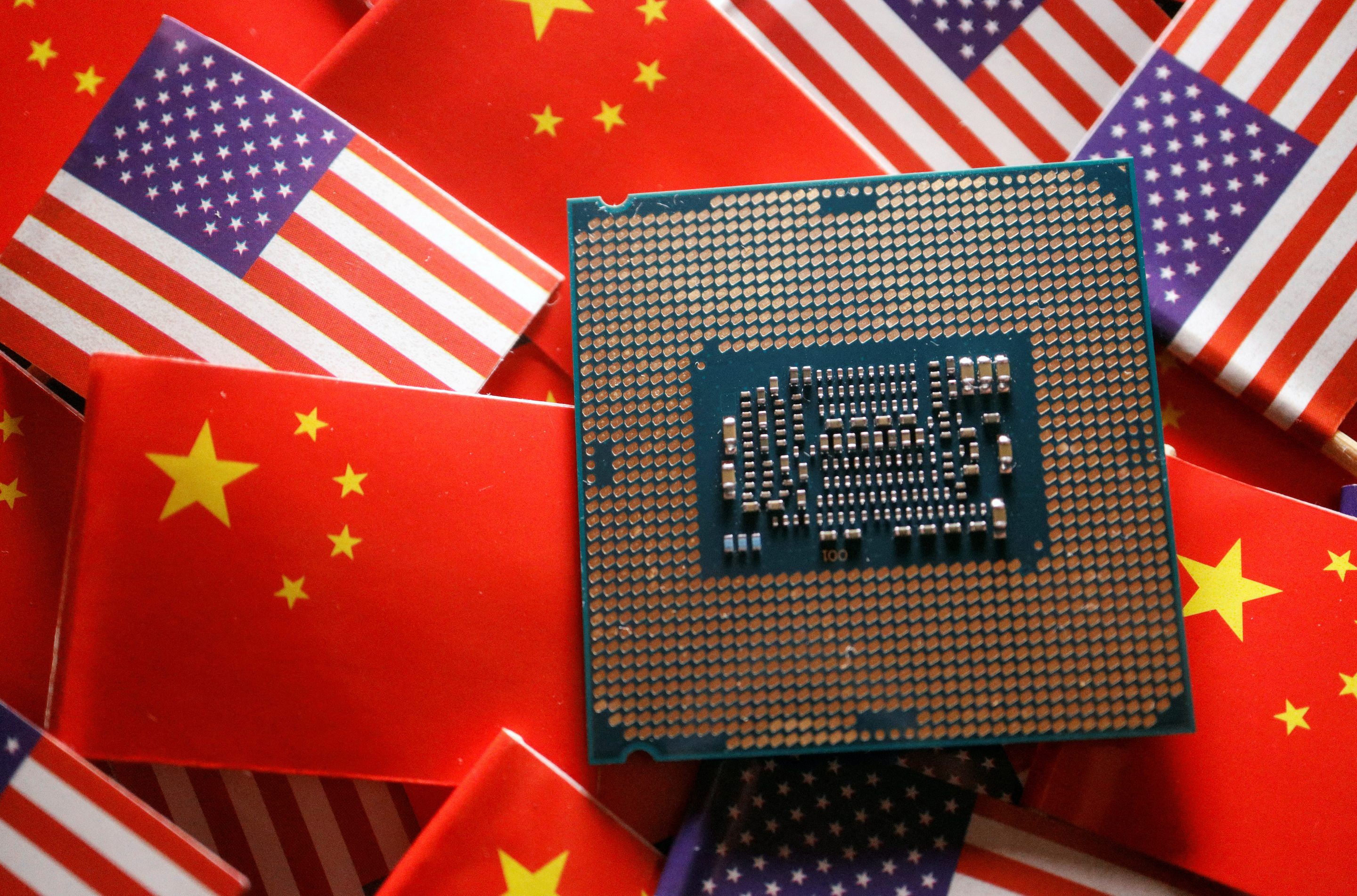
Chinese researchers develop AI model for military use on back of Meta's Llama
PHOTO CAPTION: Illustrative photo — A central processing unit (CPU) semiconductor chip is displayed among flags of China and U.S., in this illustration picture taken February 17, 2023. REUTERS/Florence Lo/Illustration
By James Pomfret and Jessie Pang
(Reuters) -Top Chinese research institutions linked to the People's Liberation Army have used Meta's publicly available Llama model to develop an AI tool for potential military applications, according to three academic papers and analysts.
In a June paper reviewed by Reuters, six Chinese researchers from three institutions, including two under the People's Liberation Army's (PLA) leading research body, the Academy of Military Science (AMS), detailed how they had used an early version of Meta's Llama as a base for what it calls "ChatBIT".
The researchers used an earlier Llama 13B large language model (LLM) from Meta, incorporating their own parameters to construct a military-focused AI tool to gather and process intelligence, and offer accurate and reliable information for operational decision-making.
ChatBIT was fine-tuned and "optimised for dialogue and question-answering tasks in the military field", the paper said. It was found to outperform some other AI models that were roughly 90% as capable as OpenAI's powerful ChatGPT-4. The researchers didn't elaborate on how they defined performance or specify whether the AI model had been put into service.
"It's the first time there has been substantial evidence that PLA military experts in China have been systematically researching and trying to leverage the power of open-source LLMs, especially those of Meta, for military purposes," said Sunny Cheung, associate fellow at the Jamestown Foundation who specialises in China's emerging and dual use technologies, including AI.
Meta has embraced the open release of many of its AI models, including Llama. It imposes restrictions on their use, including a requirement that services with more than 700 million users seek a license from the company.
Its terms also prohibit use of the models for "military, warfare, nuclear industries or applications, espionage" and other activities subject to U.S. defence export controls, as well as for the development of weapons and content intended to "incite and promote violence".
However, because Meta's models are public, the company has limited ways of enforcing those provisions.
In response to Reuters questions, Meta cited its acceptable use policy and said it took measures to prevent misuse.
"Any use of our models by the People's Liberation Army is unauthorized and contrary to our acceptable use policy," Molly Montgomery, Meta's director of public policy, told Reuters in a phone interview.
Meta added that the United States must embrace open innovation.
"In the global competition on AI, the alleged role of a single, and outdated, version of an American open-source model is irrelevant when we know China is already investing more than a trillion dollars to surpass the US on AI," a Meta spokesperson said in a statement.
The Chinese researchers include Geng Guotong and Li Weiwei with the AMS's Military Science Information Research Center and the National Innovation Institute of Defense Technology, as well as researchers from the Beijing Institute of Technology and Minzu University.
"In the future, through technological refinement, ChatBIT will not only be applied to intelligence analysis, but also ... strategic planning, simulation training and command decision-making will be explored," the paper said.
China's Defence Ministry did not reply to a request for comment, nor did any of the institutions or researchers.
Reuters could not confirm ChatBIT's capabilities and computing power, though the researchers noted that its model incorporated only 100,000 military dialogue records, a relatively small number compared with other LLMs.
"That's a drop in the ocean compared to most of these models (that) are trained with trillions of tokens so … it really makes me question what do they actually achieve here in terms of different capabilities," said Joelle Pineau, a vice president of AI Research at Meta and a professor of computer science at McGill University in Canada.
The research comes amid a heated debate in U.S. national security and technology circles about whether firms such as Meta should make their models publicly available.
U.S. President Joe Biden in October 2023 signed an executive order seeking to manage AI developments, noting that although there can be substantial benefits to innovation, there were also "substantial security risks, such as the removal of safeguards within the model".
This week, Washington said it was finalising rules to curb U.S. investment in artificial intelligence and other technology sectors in China that could threaten national security.
Pentagon spokesman John Supple said the Department of Defense recognised that open-source models had both benefits and drawbacks, and that "we will continue to closely monitor and assess competitors' capabilities".
'COOKIE JAR'
Some observers say China's strides in developing indigenous AI, including setting up scores of research labs, have already made it difficult to keep the country from narrowing the technology gap with the United States.
In a separate academic paper reviewed by Reuters, two researchers with the Aviation Industry Corporation of China (AVIC) - which the United States has designated a firm with ties to the PLA - described using Llama 2 for "the training of airborne electronic warfare interference strategies".
China's use of Western-developed AI has also extended into domestic security. A June paper described how Llama had been used for "intelligence policing" to process large amounts of data and enhance police decision-making.
The state-run PLA Daily published commentary in April on how AI could help "accelerate the research and development of weapons and equipment", help develop combat simulation and improve military training efficiency".
"Can you keep them (China) out of the cookie jar? No, I don't see how you can," William Hannas, lead analyst at Georgetown University's Center for Security and Emerging Technology (CSET), told Reuters. A 2023 paper by CSET found 370 Chinese institutions whose researchers had published papers related to General Artificial Intelligence - helping drive China's national strategy to lead the world in AI by 2030.
"There is too much collaboration going on between China's best scientists and the U.S.' best AI scientists for them to be excluded from developments," Hannas added.
(Additional reporting by Katie Paul in New York; Phil Stewart in Washington, Eduardo Baptista in Beijing and Greg Torode in Hong Kong; Editing by Gerry Doyle)










